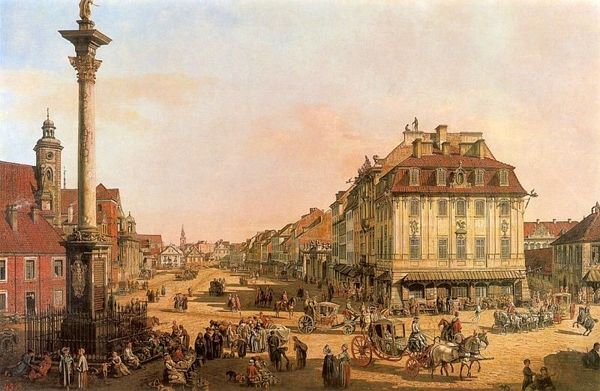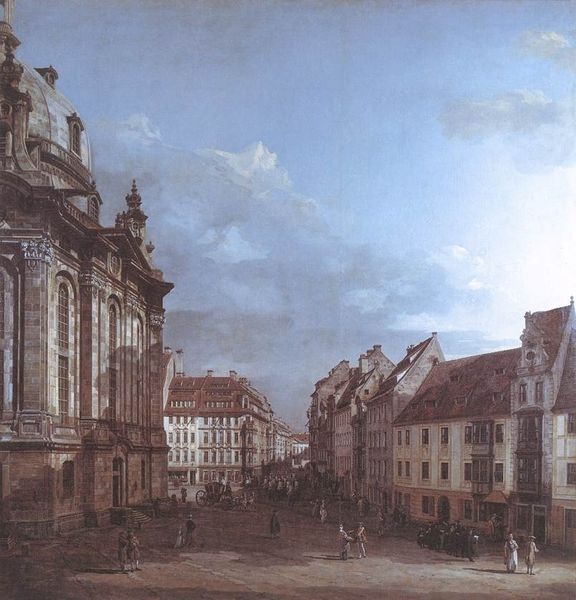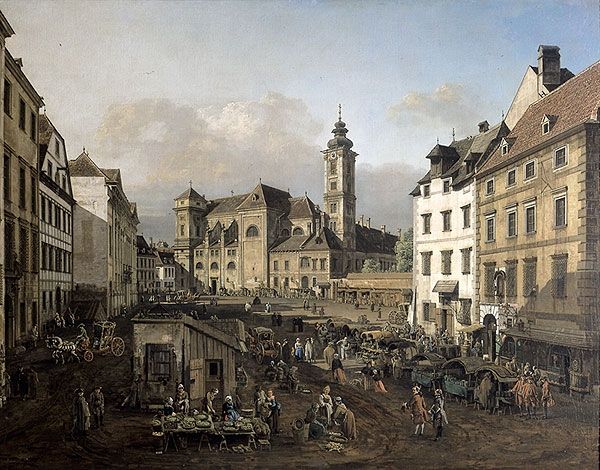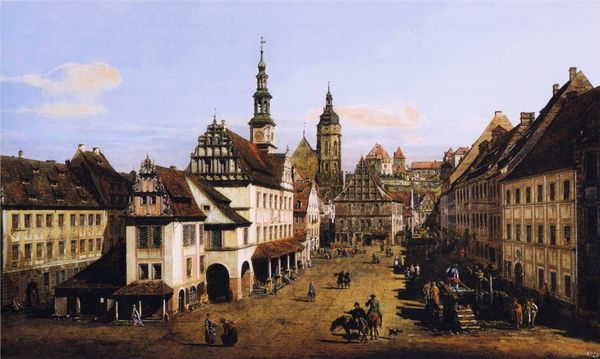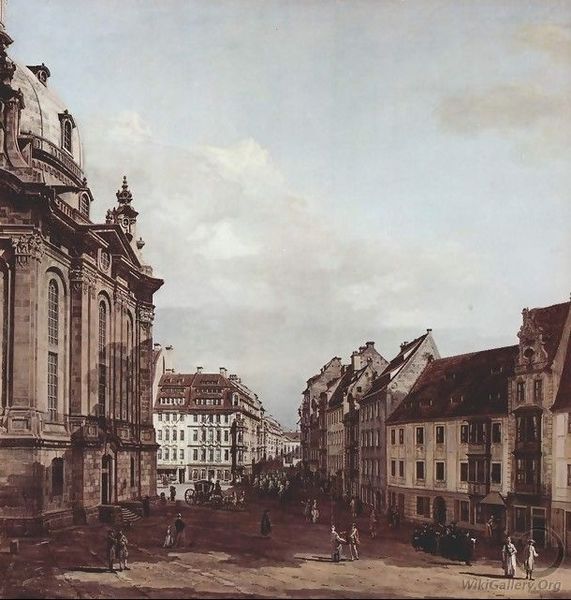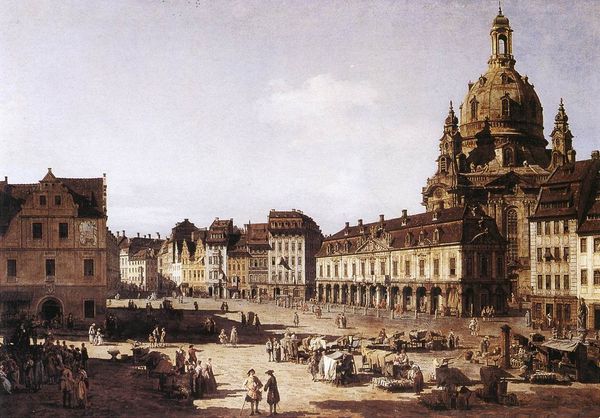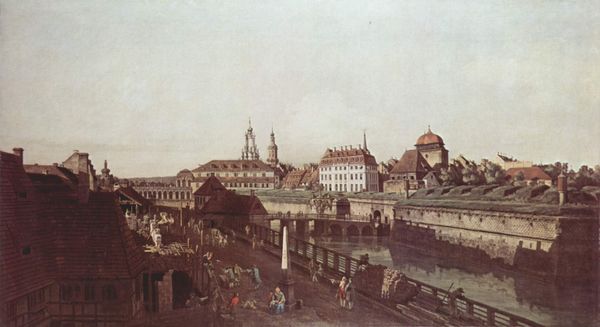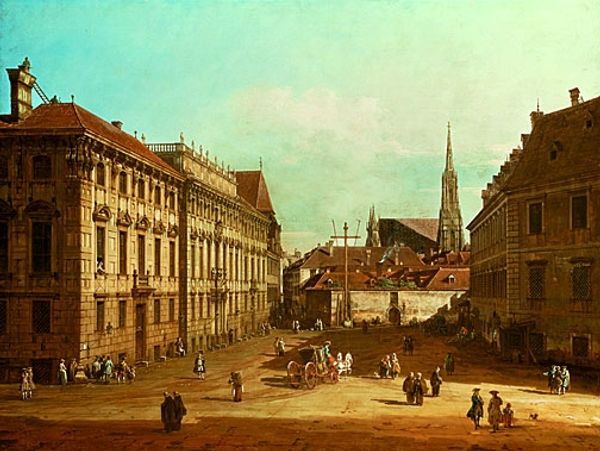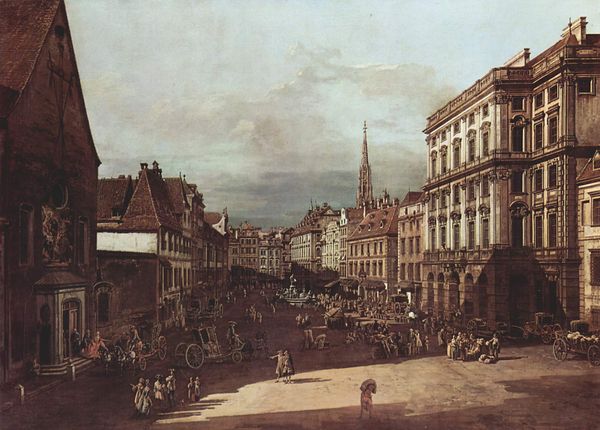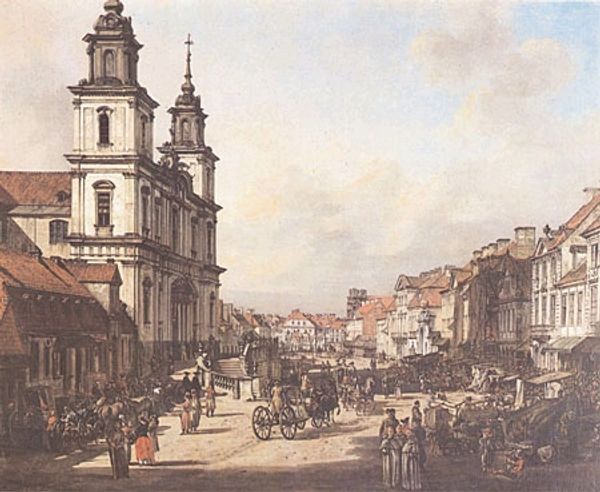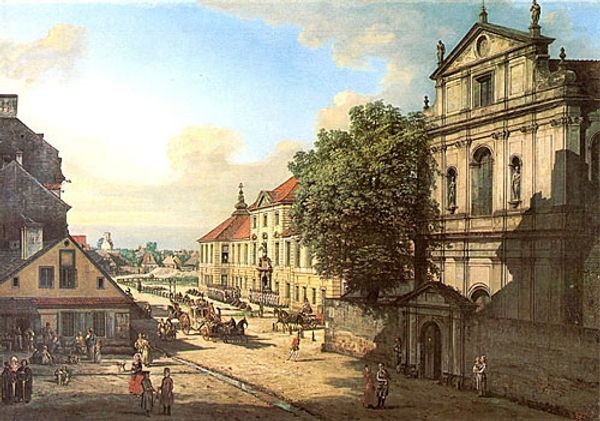
Copyright: Public domain
Editor: We’re looking at "Długa Street" painted by Bernardo Bellotto in 1778, rendered in watercolor. I'm struck by the precise detail; it feels almost photographic, especially given the time it was created. What compositional elements stand out to you? Curator: Observe the pronounced perspective, which draws the eye deep into the cityscape. Bellotto has masterfully employed linear perspective to structure the entire composition. Notice how orthogonals converge toward a vanishing point, creating an illusion of depth and spatial recession. This emphasis gives order to the sprawling urban environment, do you see how each line plays its role in leading your eye through the street? Editor: Yes, I see how those lines and the positioning of the buildings help create a focal point! It feels very deliberate. The colors seem subdued for baroque, though. Is that unusual? Curator: Baroque, yes, often evokes drama through color. However, here the relatively muted palette allows for emphasis to be placed on form and detail. The restrained use of color serves a structural purpose, subtly highlighting the architecture without overwhelming the overall composition. Consider, too, the medium of watercolor. The translucency is integral to achieving the work's specific quality of light. Does that clarify Bellotto's decisions regarding color? Editor: Absolutely, it helps me understand how he guides our eyes. Thank you. The deliberate structure and careful color choices contribute to a compelling artistic strategy! Curator: Indeed. Paying close attention to the artistic tools, we perceive not only what Bellotto painted but *how* he orchestrated the image to affect our perception of space, depth, and detail.
Comments
No comments
Be the first to comment and join the conversation on the ultimate creative platform.
